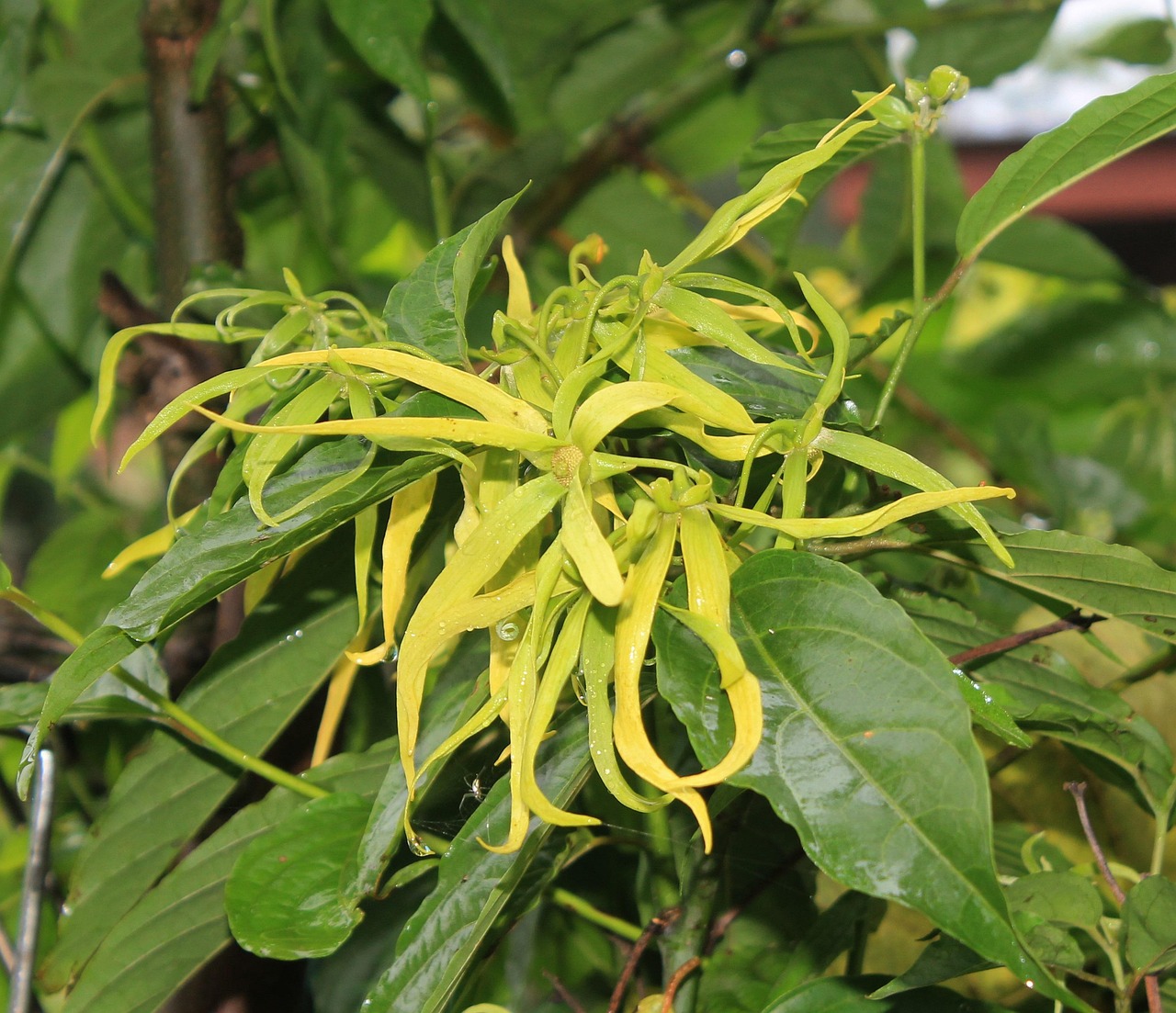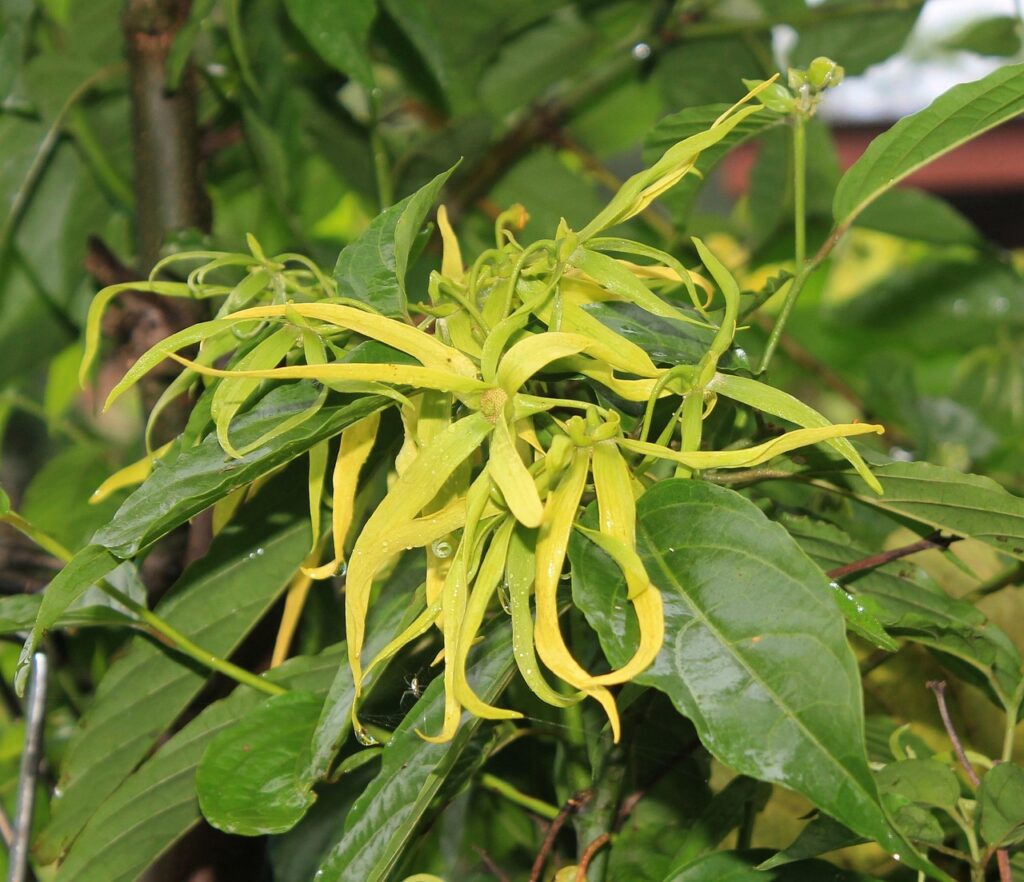
From Pixabay, Content License
Samoa
Ylang-Ylang
Cananga odorata

From Pixabay, Content License
General Description / Cultural Significance
Ylang-ylang (Cananga odorata) is a tropical tree renowned for its strikingly sweet, floral fragrance and distinctive star-shaped flowers. Native to Southeast Asia, it has been embraced in Samoa, where it thrives in the warm, humid climate. The tree’s lush foliage and cascading clusters of yellow-green flowers make it a cherished part of Samoan gardens and landscapes. Its intoxicating scent, which intensifies at dusk, contributes to the island’s rich olfactory environment, evoking a deep connection to nature.
In Samoan culture, ylang-ylang holds both practical and symbolic significance. The essential oil, extracted through steam distillation of the flower petals, is highly valued for its use in traditional medicine, aromatherapy, and natural perfumery. Known for its calming and uplifting properties, it is often incorporated into wellness practices that promote relaxation, emotional balance, and overall well-being—qualities that resonate with the Samoan philosophy of peaceful coexistence with both nature and community.
Beyond its medicinal and aromatic uses, ylang-ylang flowers are sometimes woven into ceremonial garlands (ula) and used as adornments in cultural celebrations, symbolizing beauty, hospitality, and connection to the land. In traditional healing, the flowers and leaves are sometimes infused into oils or herbal preparations to treat minor ailments such as skin irritations, headaches, and anxiety. The tree’s presence in Samoan villages and homesteads is a testament to its enduring role in daily life, where it is appreciated not only for its fragrance but also for its broader cultural and ecological significance.
Climate Change / Conservation Status
Although ylang-ylang in Samoa is not currently classified as a threatened species, it faces indirect challenges from climate change. Rising temperatures, shifting rainfall patterns, and the increased frequency of cyclones pose risks to its growth, flowering cycle, and overall health. Extreme weather events, such as prolonged droughts and tropical storms, can stress the trees, reduce flower production, and ultimately impact the local availability of its fragrant blossoms and essential oil.
While there are no targeted conservation efforts specifically for ylang-ylang in Samoa, its preservation is linked to broader environmental initiatives focused on tropical forest protection, sustainable agroforestry, and biodiversity conservation. Encouraging the integration of ylang-ylang into agroforestry systems—where it is cultivated alongside other native and economically valuable plants—can enhance its resilience against environmental changes. Sustainable harvesting practices and community-led conservation efforts will be essential in ensuring the continued cultural and ecological significance of ylang-ylang in Samoa for future generations.
Alternate Names
Cananga
Perfume Tree
Macassar Oil Plant
Kenanga
Sources
Parrota, John A. “Cananga Odorata (Lam.) Hook. F. & Thoms., 1855.” Fs.USDA, U.S. Forest Service, Research & Development, 2009, www.fs.usda.gov/research/publications/misc/63343_2009%20Parrotta%20Cananga%20odorata.pdf.
“Ylang Ylang: Help a Forest Survive.” Klorane Botanical Foundation, Klorane Botanical Foundation, www.kloranebotanical.foundation/en/projects/ylang-ylang-help-forest-survive. Accessed 18 Mar. 2025.

